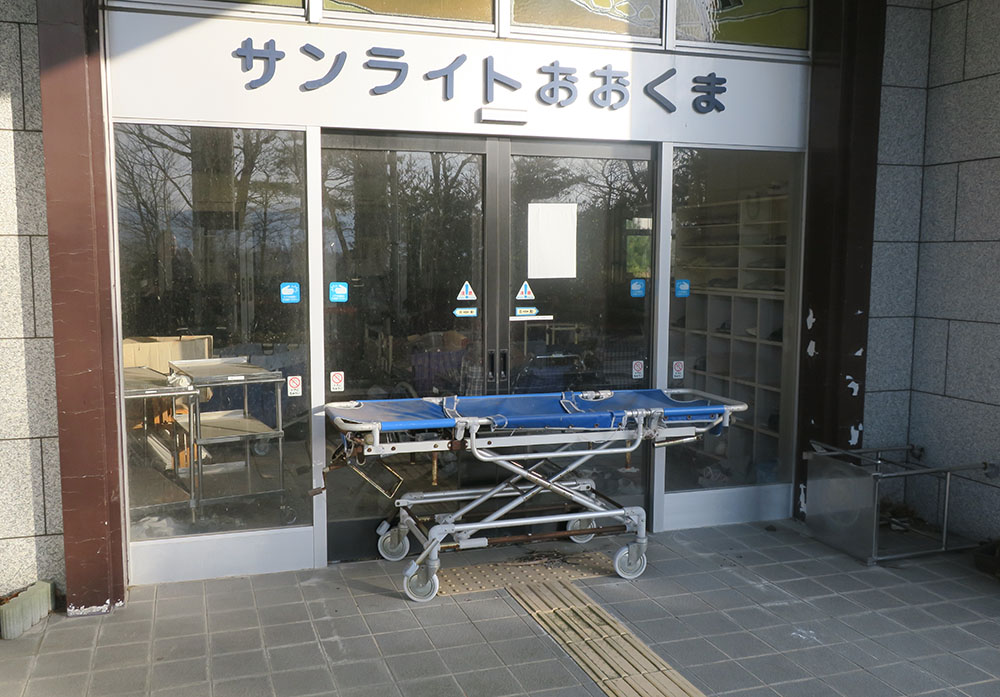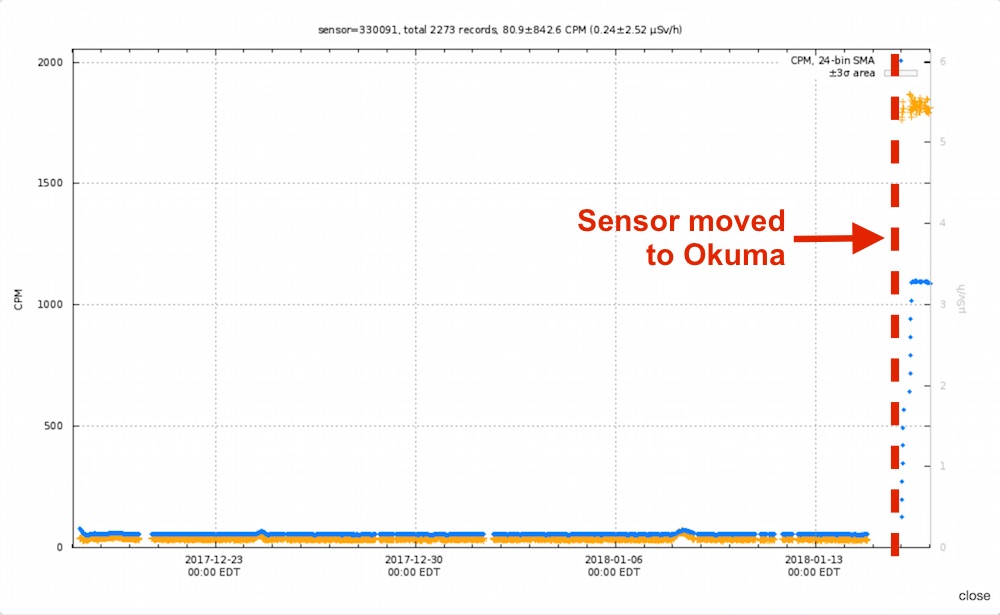Above: Joe mounting the Solarcast Nano within sight of the Fukushima Daiichi Nuclear Power Plant.
This week Safecast installed one of our new Solarcast Nano realtime radiation sensors at a site inside the exclusion zone in Okuma, Fukushima, just 2 km from the damaged Fukushima Daiichi reactor. We currently have 15 fixed realtime sensors in Fukushima, as a reality check against official monitoring data. This is the closest to Daiichi we’ve been able to place a realtime sensor so far. As we described in our blog post last month, the Solarcast Nano is a solar-powered, stand-alone realtime monitoring device which evolved out of our earlier Pointcast and original Solarcast designs. We built ten prototype Solarcast Nano units in a test build session at our office in Tokyo last month, and have been testing them since then. We were shown this site in Okuma last month as well, the same day we had our tour of Daiichi, and immediately sought permission to mount a Solarcast there. Cooperative officials from Fukushima Prefecture, who understand the importance of transparency, helped make it happen.


The site is an abandoned elderly home called the Sunlight Okuma Elderly Care Facility, which sits on a hilltop about 100m above sea level with an unobstructed view of Daiichi. Sunlight Okuma was within the 3km area given an evacuation order at 9pm on March 11, 2011. Thankfully the evacuation was handled well and there were no fatalities among the frail residents as there were at several other elderly homes and hospitals in Fukushima. Seeing the facility today is a bit depressing, as it was obviously a well-designed and attractive place when it was in operation. Now an abandoned gurney blocks the main entryway and the lobby shows signs of hasty abandonment, an eerie time capsule of six and a half years ago. The area around this hill in Okuma has been designated for use as intermediate-term storage and processing of decontamination wastes. As we note in the Safecast Report this facility is now several years behind schedule, but eventually Sunlight will overlook landfill and radioactive waste-related infrastructure. The Sunlight site itself is under the jurisdiction of the Environment Ministry, and our contacts say that the current plan is to leave it untouched for the coming 30 years and then demolish it.


The Solarcast systems are the brainchild of Ray Ozzie, and are intended for situations just like this: inaccessible places which have no provision of power or wired internet connectivity. They are “drop and forget” devices, and this installation provided a useful real-world test of those capabilities. Because our time onsite was limited and access required advance permission, Joe and Azby brought a selection of hardware for mounting the device and were prepared to improvise. After debating a few possible mounting methods and locations, we opted for a very simple setup. Joe attached the Solarcast Nano to a sturdy fence using aluminum wire at the top and a stainless-steel plated strap he bent to form a secure bracket at the bottom. He angled it so the device would get optimum sunlight. The actual installation took about 20 minutes, though we had to wait for a while to confirm that it was online and operating properly. Joe used the waiting time to fly a video drone near the site.

The data from this Solarcast can be seen at realtime.safecast.org, listed as “Japan, Fukushima, Okuma, Minamidai,” with more details here and here. Before bringing it to Fukushima this week, this particular unit had been on Azby’s deck in Yokohama for a few weeks. The default data graph displays the most recent 30 days of radiation measurements, and if you look at it now you can see the large difference in radiation levels in Yokohama and in Okuma : 0.1 μSv/h vs 5.5 μSv/h.

At this point this Solarcast Nano has been operating without issues, though because it is a prototype unit we still consider this installation a test. As a proof-of-principle it appears very successful, and we look forward to more installations close to Daiichi in the near future.